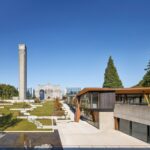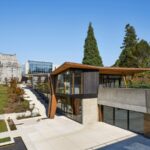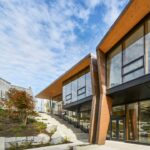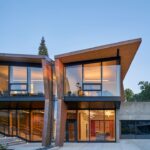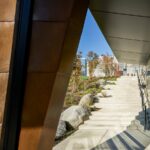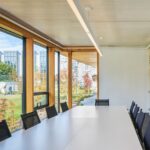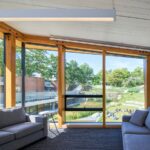Located at the heart of Canada’s second-largest university, between the Irving K Barber Learning Centre and the Koerner Library, the Indian Residential School History and Dialogue Centre (IRSHDC) embodies architectural themes of memory and social discourse. It serves as a pivotal space for reconsidering the relationship between Indigenous communities and Canadian society, fostering dialogue among community members, scholars, and visitors.

Unification of Space and Purpose
Comprising two levels, the IRSHDC integrates existing basement space from Koerner Library with new construction above on the mid-level plaza. This unique design amalgamates Indigenous culture and history with the academic environment, creating a powerful symbol of recognition within the campus landscape.
Facilitating Informed Dialogue
Drawing upon community engagement and emergent technologies, the IRSHDC aims to facilitate informed dialogue and transparent information practices. It seeks to provide equitable access to records and information, particularly those related to traumatic events, while supporting agency and pluralistic narratives.

Symbolism and Architectural Elements
Architecturally, the building embodies the reconciliation process, marking ruptures and seeking healing. Designed to capture the Indigenous Spirit without representing any specific nation, it incorporates elements symbolic of Indigenous resilience and diversity.
- Copper Roof: Symbolizing the dignity of Coast Salish peoples.
- Charred Cedar Planks: Reflective of the scarring of residential school survivors and their resilience.
- Abundant Glazing: Offers a direct connection to nature, as requested by Musqueam residential school survivors.
- Glass Waterfall: Symbolizes the tears of survivors who endured traumatic experiences.
- Woven Cedar Wall: Represents the art of basket weaving, a cultural symbol.
Sustainability and Design
Built to LEED Gold standards, the IRSHDC employs sustainable features such as low velocity displacement ventilation, high-performance envelope, and cross-laminated timber (CLT) structures. It embraces innovation while respecting the natural environment and Indigenous heritage.

Revitalizing Campus Space
Beyond its architectural significance, the IRSHDC revitalizes campus space, providing a serene environment for reflection and dialogue. It instills confidence and optimism for the future of Indigenous identity within Canada’s academic institutions, fostering a prospective outlook on reconciliation and cultural recognition.

